Finally! We find ourselves writing at this late date to bring you up to date on our return to the U.S. mainland this past May. Good grief—it's already the end of August and we are scurrying about once again to prepare for another season southbound! But more on that later….
After a brief grocery stop in Cruz Bay, St. John, we arrived April 25 at nearby Christmas Cove, Great St. James Island, where we moored for a couple days with no goal other than to finish writing our TravelPod updates. The only downside of Christmas Cove is its close proximity to Current Cut (the narrow passage between Great St. James Island and St. Thomas) which is part of the busy route for ferries running between Charlotte Amalie and their many destinations. Consequently, large ferry boat wakes sweep through the cove quite frequently all day, every day. Fortunately, the ferries don’t run at night.
It was here also that we concluded that our Uniden VHF radio had failed – again. (VHF radio is the primary, close range ship-to-ship and ship-to-shore communication tool for both safety and convenience.) Dave had suspected something was amiss as the reception of local weather forecasts became spotty and had degraded to being inaudible, whereas our secondary handheld VHF units still received these broadcasts. Our experience with these Uniden products has been dismal. This was the third one that has failed on us since installing the original one in 2009. We stayed with this model because it supported our two wireless remotes, which we considered very useful. Nonetheless, this third failure was the final incentive we needed to vow to install another manufacturer’s product during our summer maintenance period. For now we had to rely on our two handheld VHF radios which limited our radio range to very short distances. We phoned Wally and John back in Virginia to help locate a spare VHF radio that John could bring with him for the passage home. Fortunately, Wally had access to an old radio and coordinated with John to get it to him before his departure from Norfolk to join us on Pas de Deux for the journey home.
Having completed our blog writing we relocated to Caneel Bay, St. John on April 28, arriving at 0930 to pick up a National Park mooring ball. At Caneel Bay we knew we could get internet access in order to upload our updates. This took all day, into the night and the following morning, but we finally succeeded and were able to depart at 0900 the following morning for an impromptu, quick visit back to the BVI to meet friends Larry and Lynn on their first day of a bareboat charter.
We learned of Larry and Lynn’s interest in chartering a bareboat during our visit with him in Palm Beach, FL on our way home last spring. They later scheduled an early May charter and we were resigned to missing an opportunity to rendezvous with them because we expected to be on our way home by that time, with a passage through the Bahamas. However, now that we had decided to attempt a non-stop passage back to the Chesapeake Bay (for the first time) directly from the Virgin Islands, we could depart the USVI on a later date, allowing us a quick rendezvous with Larry and Lynn. It was April 29, the first day of their charter departing from Roadtown, Tortola and we had to be back in St. Thomas for John’s arrival the next afternoon. We made tentative plans to meet at Cooper Island, BVI for a one-night stand and then make a quick dash back to St. Thomas the next day to pick up crewmember John.
Entering BVI waters we would lose our AT&T cell coverage and would have to rely on our limited range handheld VHFs for communicating with Larry and Lynn on their charter boat, whose name we didn’t yet know – so we knew communications would be challenging. Unbeknownst to us, Capt. Larry had already decided to change his first day destination to Norman Island due to the current high winds which did not favor the Cooper Island anchorage. His attempt to contact us by cell phone led only to voice mail. Wisely, he persisted in attempting to contact us via VHF and Donna heard his hail after we were in Drake Channel. We learned of the change of plans and the rendezvous was salvaged. We easily diverted to Norman Island and found a spot to anchor in The Bight. Larry’s charter boat Snowcat arrived a short while later and they skillfully picked up a mooring ball right behind us. We had a fun visit all afternoon aboard Snowcat with Larry, Lynn, and their crew of Lynn’s siblings and spouses. It was clear to us that they were about to have a terrific week in the BVI! We joined up again that evening aboard the nearby Willy T, the famous floating restaurant/bar for after-dinner drinks.
Pas de Deux departed The Bight at 0800 on April 30, sailing downwind under genoa alone to anchor at 1200 in Lindbergh Bay, St. Thomas, adjacent to the airport. Donna met John at the arrival gate for the short walk back to the beach and a quick dinghy transfer to Pas de Deux. We then motored around the runway to the more comfortable Brewer’s Bay, arriving at 1630. After this hectic day we were able to finally relax with John and strategize our passage plans. They would soon change….
Our original plan after John’s arrival was to treat him to a few "down time" days in the USVI before starting a direct route back to the Chesapeake Bay. A few days reward seemed hardly adequate for an expected 8+ day, nonstop, open ocean volunteer sacrifice. John’s only scheduling constraint was to get home by Memorial Day, so we had ample time to spare. But the weather Gods had a different plan. We had been listening intently to our weather router Chris Parker; the near-term forecast was very good for immediate departure, the mid- and longer term forecasts were dismal. Either passing tropical waves or high pressure ridges - with attendant squally or no-wind patterns, respectively - were in the forecast, approaching from the southeast, starting a few days out with no end in sight. This meant we either had to leave right away, or risk waiting until at least mid-May for better conditions. Evaluating these options, the three of us were quick to recognize the right answer and we made plans to get diesel fuel the next morning at nearby Crown Bay, treat John to a cheeseburger in paradise at a highly rated local dive on a nearby island, then get underway for the Chesapeake Bay – taking advantage of what appeared to be an excellent near-term forecast.
The next morning, May 1, we attempted to speak to Chris on his morning SSB nets to confirm our passage planning but could not make contact. We attributed this to poor propagation that we’d heard others complaining about. But we were confident in our weather analysis and planning and proceeded. Before departing Brewer’s Bay we replaced the mainsail halyard with line Dave purchased during Pete’s visit. We departed at 1030 and took on 95 gallons of diesel to top off the tanks at Crown Bay Marina. Then it was on to the ceremonial last meal ashore in paradise before departing for the open ocean.
John, being a cheeseburger aficionado, had read that the cheeseburgers at nearby Heidi’s Beach Bar at Honeymoon Bay, Water Island were rated #1 in the Caribbean by an All At Sea cruiser’s survey. Good enough for us! It was a short motor to Honeymoon Bay from Crown Bay Marina and we were soon in place at the rustic picnic tables at Heidi’s on the beach awaiting our burgers. Satisfied with our lunch, we began the passage home at 1415 hours on May 1, 2012.
As predicted, the weather for the first couple of days was near perfect. The winds were behaving as perfect trade winds: ENE at 15 to 17 knots, perfectly steady with very little variation in either speed or direction. Our direction was NW, so we were on a beam reach. As an added bonus the seas were calmer than they should have been for the brisk wind, as the preceding calm light-wind days had moderated sea conditions, and higher seas had yet to build. The result was fast passage speeds for us: we logged 431 nautical miles in the first 48 hours since raising anchor at Honeymoon Bay.
The downside of this fast speed (8-10 knots with peaks reaching 13) was that we were going too fast to fish. We could hook something but we would have had to slow substantially to hope to land anything. With only three aboard this would have been challenging, so we decided to hold off fishing until we slowed. This would happen as we exited the trades and caught up with lighter conditions. The wind dropped to less than 10 kts just before midnight on May 3, about 57 hours into our passage, and we had to start motoring to continue making headway.
Within a few hours the wind decreased to light and variable and we took in all sail. At least after daybreak (on May 4) we could start fishing. A reel finally sang out around mid morning but our hopes for a good dinner were soon dashed when Dave reeled in a shoe. We swear we are not making this up – see the picture. We caught a shoe out in the middle of the ocean. Filet of “Sole” for dinner...?
Throughout these first few days we were unsuccessful communicating with anyone via voice on the SSB radio. We could send and receive e-mail, with a bit more trouble than we were used to, but could only receive voice. We could hear Chris Parker on his morning weather nets and were able to get generalized forecasts, but we couldn’t ask him specific routing information for when we approached the Gulf Stream in a few more days. Recall we had sustained a complete failure of the SSB back in February while in Sint Maarten and had shipped it off for repair to Icom from St. Thomas in late March. Icom claimed to have fixed it, and we were having success sending and receiving e-mail, but our suspicions were high that it wasn’t fully fixed – or another failure in the antenna system had coincidently occurred. It was acting as if the antenna tuner wasn’t working, but this component wasn’t involved in the prior failure and Icom repair. Dave and John tried troubleshooting the antenna including disassembling and cleaning the wire connector at the base of the antenna, but without improvement.
To this point we had maintained a straight line course from the USVI to Cape Hatteras, but we didn’t have detailed updates on whether we should maintain this or turn more west in anticipation of a front coming off the coast forecast in the mid-term. Via e-mail with friends Ken and Joan, and with Wally’s assistance communicating from his home in Va. Beach with Chris Parker, we succeeded in getting an e-mail message to Chris who responded quickly late in the day on May 4 with his advice: Stay on course until we get the strong NE frontal winds on May 7, then turn due west to a broad reach for a smoother ride to enter the Gulf Stream just south of Cape Hatteras, then pass around the Cape and parallel the North Carolina and Virginia beaches to Cape Henry. The front should pass and the winds diminish behind it as we cross the Gulf Stream, for which he provided specific entry and exit waypoints and a target timeframe for crossing with the most favorable winds. OK…now we had a better plan.
On May 5 and 6 winds were up and down and back and forth and we alternated between sailing and motoring, keeping up with our “schedule” for being where we wanted to be when the front arrived on May 7. We managed to land one nice mahi, but we also scored a bull’s eye on a thunderstorm. Pretty much right on schedule the front arrived in the early hours of May 7 and we bore away to the W in the building wind, but it was still pretty rough. We saw winds up to 30 knots, but because we had built in the plan to turn away from the winds for the expected duration of their highest strength, we were better off than we might have been. Chris’ advice was spot on, again, and by the time we entered the Gulf Stream around 1700, the wind was already beginning to veer more east and diminish as we turned back to the NW for Cape Hatteras.
We exited the Gulf Stream 30 minutes into May 8, coincident with the wind diminishing to SE at 10-12 kts as we neared Cape Hatteras. The wind was less than 5 kts by 0400 and we were motoring again. But as if to give us a proper arrival home to Virginia, the winds settled in at 15-20 from the SSE by late morning and we had a glorious downwind spinnaker run along the North Carolina and Virginia beaches all afternoon. We arrived off Virginia Beach in time for Happy Hour and were greeted from shore for two “Fly By” welcomes by Joan K. at Croatan and Carter on the North End, arriving at Cape Henry around 2000. It was a nice finish to a good passage. We finally dropped anchor in Willoughby Bay at 2256, opting not to try to dock at Willoughby Harbor Marina in the dark. The passage time was 7 days, 8 hours, 41 minutes; distance was 1319 nm; average speed 7.5 kts. For our entire winter cruise we covered 4312 nautical miles.
John spent another night aboard with us and Dave took him into the marina via dinghy the next morning where his catamaran, Alize, is docked. Thanks, John, for helping us on this successful record-time (for us) passage!
So here we are at the tail end of August, readying for another winter season in warmer waters, and keeping an eye on the current hurricane activity passing through the Atlantic. Bob and Wally have already signed up for the November passage and we’re really excited to have them join us once again for what should be another exciting adventure!
Choosing the More Direct Route Homeward
Tuesday, August 28, 2012
 Norfolk, Virginia, United States
Norfolk, Virginia, United States
Other Entries
-
188Great Expectations, Great Escapes
Jan 12229 days prior Cane Garden Bay, Virgin Islands Britishphoto_camera1videocam 0comment 0
Cane Garden Bay, Virgin Islands Britishphoto_camera1videocam 0comment 0 -
189Final Winter Days in the British Virgin Islands
Jan 15226 days prior Cane Garden Bay, Virgin Islands Britishphoto_camera5videocam 0comment 0
Cane Garden Bay, Virgin Islands Britishphoto_camera5videocam 0comment 0 -
190A Day in the Life
Jan 16225 days prior Cruz Bay, Virgin Islands USphoto_camera0videocam 0comment 0
Cruz Bay, Virgin Islands USphoto_camera0videocam 0comment 0 -
191Short Visits with Friends Arriving in the Islands
Jan 24217 days prior Crown Bay, Virgin Islands USphoto_camera15videocam 0comment 0
Crown Bay, Virgin Islands USphoto_camera15videocam 0comment 0 -
192Aiming for a Vacation to Remember
Feb 03207 days prior Crown Bay, Virgin Islands USphoto_camera68videocam 6comment 0
Crown Bay, Virgin Islands USphoto_camera68videocam 6comment 0 -
193Rendezvous with S/V Southern Cross
Feb 05205 days prior Brewers Bay, Virgin Islands USphoto_camera1videocam 0comment 0
Brewers Bay, Virgin Islands USphoto_camera1videocam 0comment 0 -
194Friends and Anemones
Feb 07203 days prior Round Bay, Virgin Islands USphoto_camera39videocam 4comment 0
Round Bay, Virgin Islands USphoto_camera39videocam 4comment 0 -
195Destination Sint Maarten
Feb 13197 days prior Simpson Bay, Saint Martinphoto_camera4videocam 0comment 0
Simpson Bay, Saint Martinphoto_camera4videocam 0comment 0 -
196Travel to the Enchanting Island of Saba
Feb 19191 days prior Saba, Netherlands Antillesphoto_camera17videocam 1comment 0
Saba, Netherlands Antillesphoto_camera17videocam 1comment 0 -
197Around St. Maarten Multihull Regatta
Feb 22188 days prior Simpson Bay, Saint Martinphoto_camera12videocam 1comment 0
Simpson Bay, Saint Martinphoto_camera12videocam 1comment 0 -
198Preps for the 32nd St. Maarten Heineken Regatta
Mar 01180 days prior Simpson Bay, Saint Martinphoto_camera5videocam 0comment 0
Simpson Bay, Saint Martinphoto_camera5videocam 0comment 0 -
199Let the Racing Begin!
Mar 02179 days prior Simpson Bay, Saint Martinphoto_camera22videocam 0comment 0
Simpson Bay, Saint Martinphoto_camera22videocam 0comment 0 -
200The Pink Sands of Barbuda with Paul and Linda
Mar 07174 days prior Gravenor Bay, Antigua and Barbudaphoto_camera41videocam 0comment 0
Gravenor Bay, Antigua and Barbudaphoto_camera41videocam 0comment 0 -
201Paul and Linda’s Vacation Continues
Mar 13168 days prior Codrington, Antigua and Barbudaphoto_camera25videocam 0comment 0
Codrington, Antigua and Barbudaphoto_camera25videocam 0comment 0 -
202Return to the US Virgin Islands
Mar 18163 days prior Marigot Bay, Saint Martinphoto_camera1videocam 0comment 0
Marigot Bay, Saint Martinphoto_camera1videocam 0comment 0 -
203Brother Pete’s 1st Visit to Virgin Islands
Apr 02148 days prior St. Thomas, Virgin Islands USphoto_camera13videocam 0comment 0
St. Thomas, Virgin Islands USphoto_camera13videocam 0comment 0 -
204Together Again – Lingering in the USVI
Apr 12138 days prior Buck Island, Virgin Islands USphoto_camera10videocam 0comment 0
Buck Island, Virgin Islands USphoto_camera10videocam 0comment 0 -
205Choosing the More Direct Route Homeward
Aug 28 Norfolk, United Statesphoto_camera17videocam 1comment 0
Norfolk, United Statesphoto_camera17videocam 1comment 0 -
206Summer Maintenance and Re-launch of Pas de Deux
Nov 0872 days later Drayden, United Statesphoto_camera22videocam 0comment 0
Drayden, United Statesphoto_camera22videocam 0comment 0 -
207Passage from the Chesapeake to the Bahamas
Nov 0973 days later Little Creek, United Statesphoto_camera17videocam 0comment 0
Little Creek, United Statesphoto_camera17videocam 0comment 0 -
208Enjoying the first days with our crew
Nov 1478 days later Spanish Wells, Bahamasphoto_camera29videocam 0comment 0
Spanish Wells, Bahamasphoto_camera29videocam 0comment 0 -
209On our own again...naturally! Cruising Eleuthera
Nov 1680 days later Eleuthera, Bahamasphoto_camera27videocam 0comment 0
Eleuthera, Bahamasphoto_camera27videocam 0comment 0 -
210A Visit to Little San Salvador, Bahamas
Nov 2892 days later Little San Salvador Island (Half Moon Cay), Bahamasphoto_camera2videocam 0comment 0
Little San Salvador Island (Half Moon Cay), Bahamasphoto_camera2videocam 0comment 0 -
211Cruising Cat Island, Bahamas
Dec 0397 days later Cat Island, Bahamasphoto_camera73videocam 7comment 0
Cat Island, Bahamasphoto_camera73videocam 7comment 0 -
212Cruising Long Island, Bahamas
Dec 15109 days later Long Island, Bahamasphoto_camera33videocam 0comment 0
Long Island, Bahamasphoto_camera33videocam 0comment 0 -
213Destination Crooked and Acklins Islands, Bahamas
Dec 28122 days later Acklins Island, Bahamasphoto_camera110videocam 5comment 0
Acklins Island, Bahamasphoto_camera110videocam 5comment 0 -
214Cruising Samana Cay, Bahamas
Feb 06162 days later Samana Cay, Bahamasphoto_camera23videocam 1comment 0
Samana Cay, Bahamasphoto_camera23videocam 1comment 0 -
215Cruising San Salvador, Bahamas
Feb 12168 days later San Salvador, Bahamasphoto_camera29videocam 2comment 0
San Salvador, Bahamasphoto_camera29videocam 2comment 0 -
216On to Conception Island, Bahamas....
Feb 18174 days later Conception Island, Bahamasphoto_camera28videocam 0comment 0
Conception Island, Bahamasphoto_camera28videocam 0comment 0 -
217Sailing Northward to Eleuthera, Bahamas
Feb 25181 days later Rock Sound, Bahamasphoto_camera49videocam 1comment 0
Rock Sound, Bahamasphoto_camera49videocam 1comment 0 -
218Sailing the Abacos
May 13258 days later Marsh Harbour, Bahamasphoto_camera53videocam 1comment 0
Marsh Harbour, Bahamasphoto_camera53videocam 1comment 0 -
219Our Passage from Great Abaco to the Chesapeake Bay
May 19264 days later Norfolk, United Statesphoto_camera15videocam 0comment 0
Norfolk, United Statesphoto_camera15videocam 0comment 0 -
2202013-2014 Season in the Eastern Caribbean
Dec 24848 days later Drayden, United Statesphoto_camera57videocam 1comment 0
Drayden, United Statesphoto_camera57videocam 1comment 0 -
221Setting Sail Once Again-Bahamas Bound
Dec 151570 days later Abraham’s Bay, Bahamasphoto_camera34videocam 0comment 0
Abraham’s Bay, Bahamasphoto_camera34videocam 0comment 0 -
222Sailing Weather or Not
Jan 251611 days later Great Exuma, Bahamasphoto_camera19videocam 0comment 0
Great Exuma, Bahamasphoto_camera19videocam 0comment 0 -
223In the Southern Exumas
Feb 101627 days later Sampson Cay, Bahamasphoto_camera41videocam 0comment 0
Sampson Cay, Bahamasphoto_camera41videocam 0comment 0

 Norfolk, Virginia, United States
Norfolk, Virginia, United States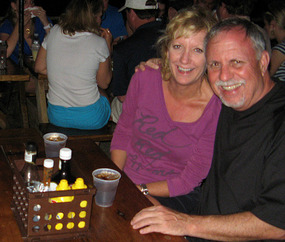
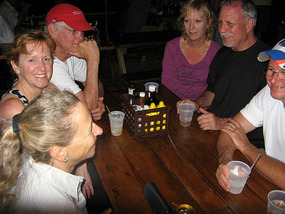
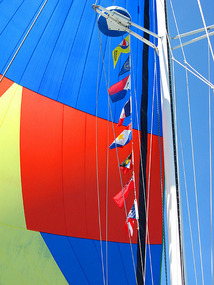
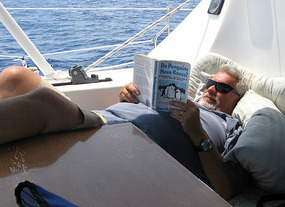
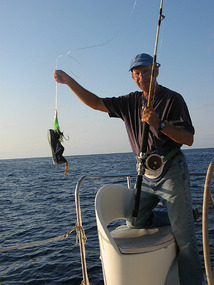
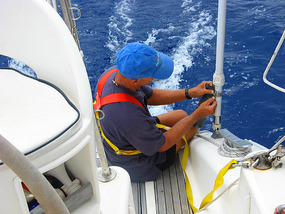
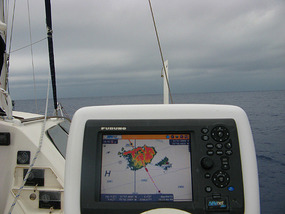
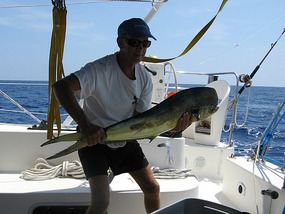
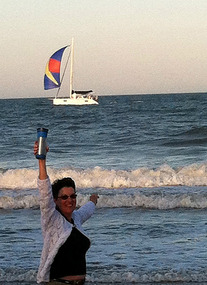








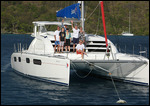
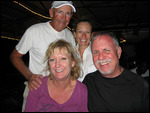
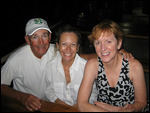

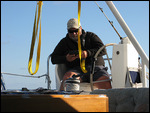
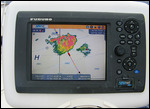
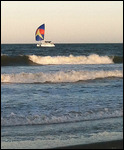
2025-05-23